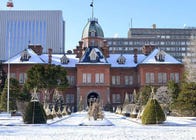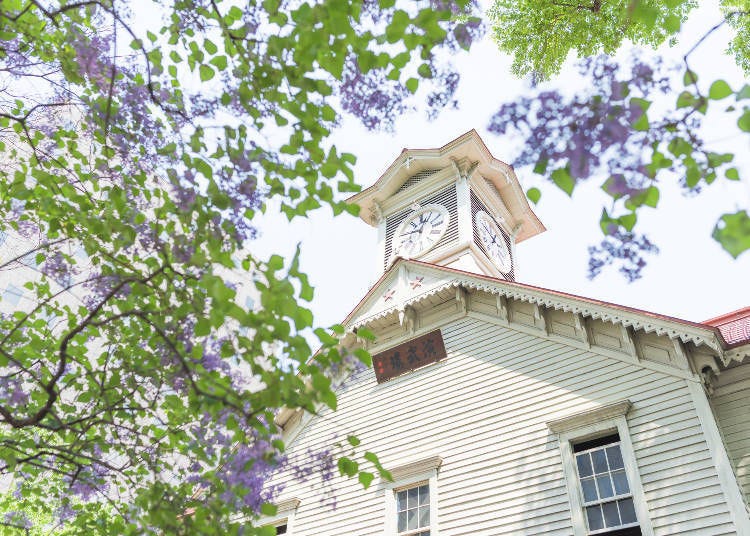
A relatively young region in Japan, Hokkaido began full-scale development about 150 years ago. When traveling there, you’ll see many Western-style historical buildings.
Hokkaido’s natural environment is very harsh. While it’s difficult for wooden buildings to withstand the cold and heavy snow, the influx of Western culture was intense when the region was developing, and choosing Western-style architectural styling was to be expected.
Paying closer attention to these historic buildings, you’ll discover another facet of Hokkaido’s charm. Here we’ll present twelve classic buildings that convey the atmosphere of Hokkaido’s pioneering days.
- Table of Contents
-
- 1. Sapporo Clock Tower: Keeping the city on time for over 100 years (Sapporo)
- 2. Former Hokkaido Government Office Building: A beautiful place to relax in all seasons (Sapporo)
- 3. Hohei Kan: A prestigious Western-style building that has hosted emperors (Sapporo)
- 4. Akino Sohonten Pharmacy: Sapporo’s oldest drugstore (Sapporo)
- 5. Otaru Canal: A path of history and romance (Otaru)
- 6. Former Mitsui Bank Otaru Branch: Conveying the historical prosperity of Otaru (Otaru)
- 7. Former Takahashi Warehouse: The old soybean warehouse (Otaru)
- 8. Hakodate Red Brick Warehouse: A symbol of the port’s prosperity (Hakodate)
- 9. Hakodate Orthodox Church: A distinct sight and sound (Hakodate)
- 10. Hakodate Museum and Municipal Archives (former Kanamori Western Goods Store): A heavy brick structure that escaped the great fire (Hakodate)
- 11. Old Public Hall of Hakodate Ward: An Important Cultural Property of Hakodate City (Hakodate)
- 12. Abashiri Prison: A frigid prison that struck fear in the hearts of criminals (Abashiri)
- Find “Exotic Japan” in Hokkaido
1. Sapporo Clock Tower: Keeping the city on time for over 100 years (Sapporo)

About an 8-minute walk from JR Sapporo Station or a 5-minute walk from Odori subway station, the Clock Tower is one of Sapporo’s most iconic tourist destinations. Opened in 1876 as a performance hall for the Sapporo Agricultural College, the predecessor of Hokkaido University, it’s easily accessible and is oft-visited by tourists.
Nicknamed the “Clock Tower” by the local citizens, there wasn’t actually a clock installed at the time of completion. Reportedly, the clock was added under the direction of the Pioneer Secretary, who had attended the original completion ceremony of the performance hall. The clock tower was rebuilt in 1881, taking on its current design.
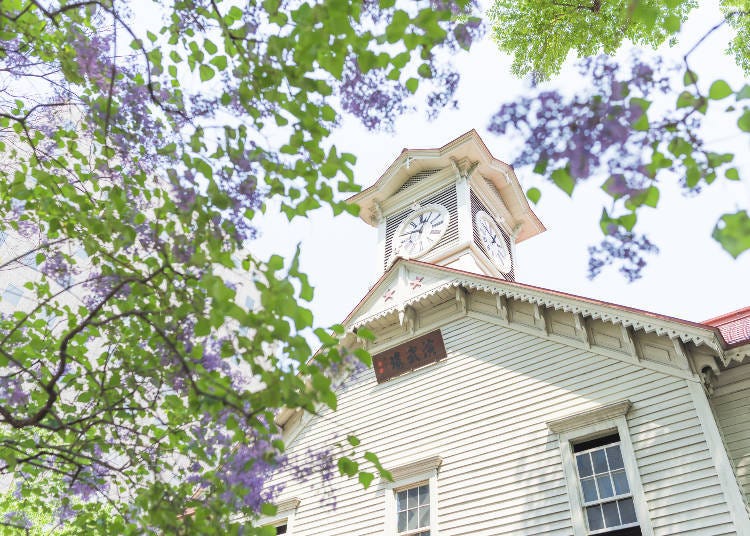
The 1st floor of the building displays materials from the Sapporo Agricultural College era, while the 2nd presents the clock tower’s history, with explanations in English, Chinese, and Korean. Additionally, the Sapporo City Tourism Association website introduces major tourist sites in English, Korean, Chinese, Thai, and Indonesian.
-

-
Address
Chuo-ku, Sapporo-shi, Hokkaido north 1 west 2, 060-0001
View Map -
Nearest Station
Odori Station (Namboku Line / Tozai Line / Toho Line)
- Phone Number 011-231-0838
-
Address
Chuo-ku, Sapporo-shi, Hokkaido north 1 west 2, 060-0001
2. Former Hokkaido Government Office Building: A beautiful place to relax in all seasons (Sapporo)
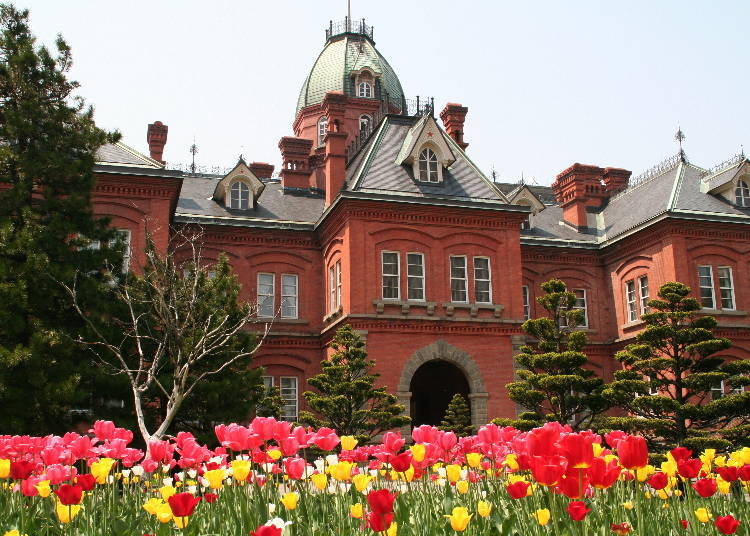
The Hokkaido Government Office, Former Main Government Office, about an 8-minute walk from Sapporo Station, is nicknamed “the Red Brick Office.” Completed in 1888, it’s an American-inspired neo-baroque building that was the seat of politics for about 80 years until a new government building was constructed.
The office’s garden is like an “oasis in the city.” With cherry blossoms in spring, rugosa roses and lilacs in summer, colorful leaves in autumn, and a snowy landscape in winter, the premises are beautiful in any season.
Tourists and locals alike can often be seen drawing or painting the Red Brick Office, while others are content to sit on nearby benches and eat lunch with a view of the impressive structure.
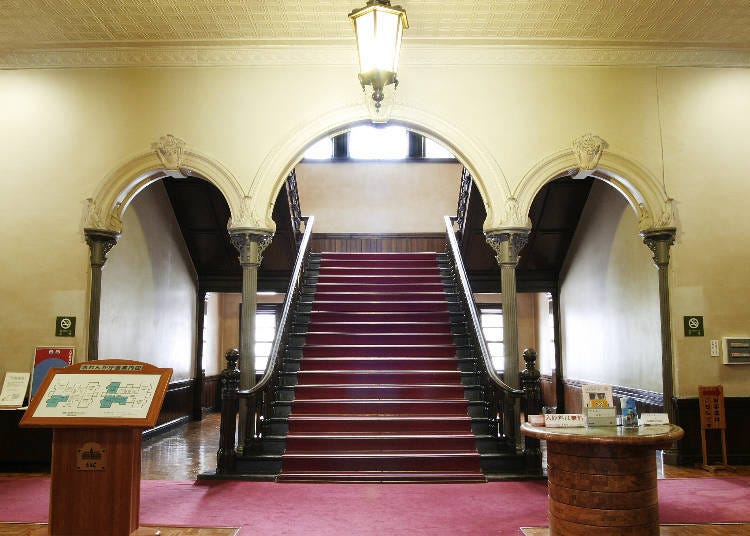
Items related to the history of Hokkaido are exhibited in the Red Brick Office, and while admission is usually free, it’s currently closed for renovations to be completed in 2022.
-

-
Address
6-chome Kitasanjo Nishi, Chuo-ku, Sapporo-shi, Hokkaido, 060-8588
View Map -
Nearest Station
Sapporo Station (Hakodate Main Line)
7 minutes on foot
- Phone Number 011-204-5019
-
Address
6-chome Kitasanjo Nishi, Chuo-ku, Sapporo-shi, Hokkaido, 060-8588
3. Hohei Kan: A prestigious Western-style building that has hosted emperors (Sapporo)

Hohei Kan, about a 5-minute walk from Nakajimakoen Station on the subway, in the center of present-day Sapporo, was built in 1880 as a hotel managed by the Hokkaido Development Commission. It’s the oldest wooden hotel in Japan and is a venerable building visited by three emperors, in the Meiji, Taisho, and Showa eras.
Even after the Hokkaido Development Commission was abolished, it was used as a hotel and banquet hall and later as a public hall managed by Sapporo Prefecture (currently Sapporo City) and the Imperial Household Agency.
Relocated to Nakajima Park near the Susukino area in 1958, Hohei Kan served as a wedding hall until 2011 and hosted more than 20,000 weddings.
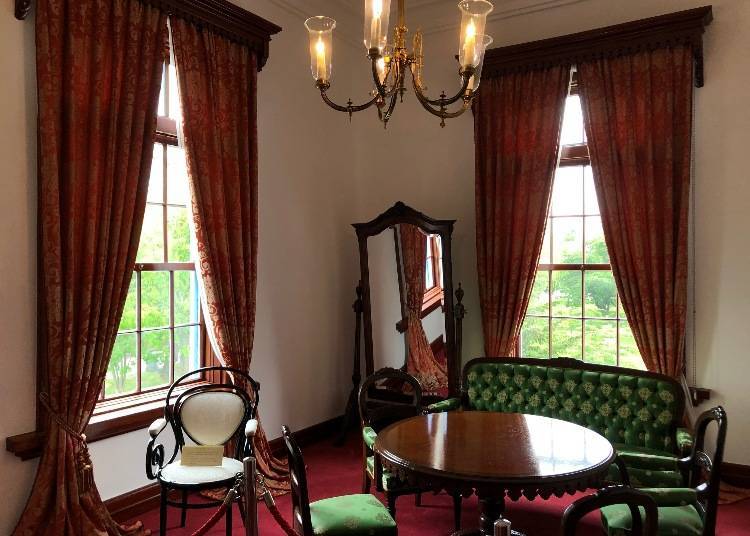
While the building is based on an American style, it’s a fusion of multiple cultures, incorporating European-style balconies and Japanese design features like autumn leaves and peonies on the ceiling. There are many exhibits related to the imperial family which bear a sense of elegance and dignity. There’s also a coffee shop with a calm atmosphere, so why not enjoy a cup of tea in this elegant setting?
The exhibits’ explanations are in Japanese only, but English, Chinese, and Korean leaflets are available, and the Hohei Kan website is conveniently available in English so you can learn more when touring the building with a smartphone or tablet.
-

-
Address
1-20, Nakajimakouen, Chuo-ku, Sapporo-shi, Hokkaido, 064-0931
View Map -
Nearest Station
Nakajima koen Station (Namboku Line)
- Phone Number 011-211-1951
-
Address
1-20, Nakajimakouen, Chuo-ku, Sapporo-shi, Hokkaido, 064-0931
4. Akino Sohonten Pharmacy: Sapporo’s oldest drugstore (Sapporo)
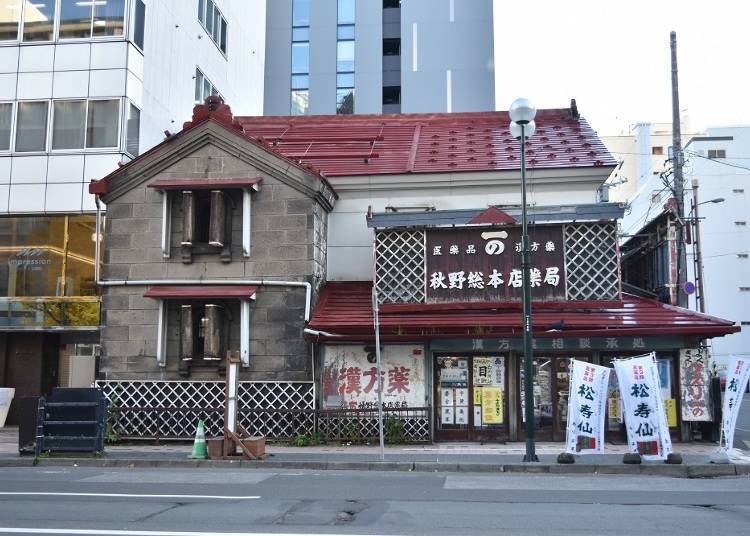
A 1-minute walk from Odori subway station, Akino Sohonten Pharmacy is the oldest drugstore in Sapporo. Founded in 1872, the current building was completed in 1901 and features a sloping gabled roof and a classically-styled stone storehouse.
The pharmacy is close to shopping areas around Odori Park and Tanukikoji Shopping Street, so it’s easy to stop by when you’re in the neighborhood. However, the Akino Sohonten Pharmacy isn’t technically a tourist site, so there’s no English notation. Entry for sightseeing purposes isn’t allowed, so be careful not to interfere with business if you visit.
-
Akino Head Office Pharmacy秋野総本店薬局
- Address 1-12 Minami 1-jo Nishi, Chuo-ku, Sapporo City 〒060-0061
- Phone Number 011-221-2460
・Hours: 10:00 a.m. - 6:00 p.m.
・Closures: Sundays and January 1st and 2nd
5. Otaru Canal: A path of history and romance (Otaru)
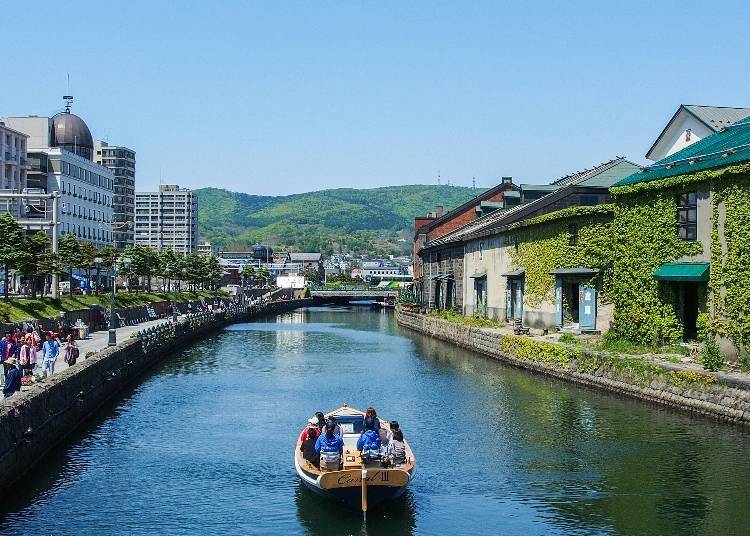
Completed in 1923 to streamline transportation from Otaru Port, Otaru Canal is about a 10-minute walk from JR Otaru Station.
Found to be an attractive tourist area, the quay was renovated, and more footpaths and nearby parks are under development. The walkway is decorated with cut granite arranged in a ginkgo pattern and also features reliefs depicting the history of Otaru.

At dusk, 63 gas lanterns illuminate the stone warehouses, creating a fantastic scene. Once the center of Hokkaido’s economy, you can take a walk through the city and read the history of the Otaru Canal on placards in English, Russian, Chinese, and Korean.
6. Former Mitsui Bank Otaru Branch: Conveying the historical prosperity of Otaru (Otaru)
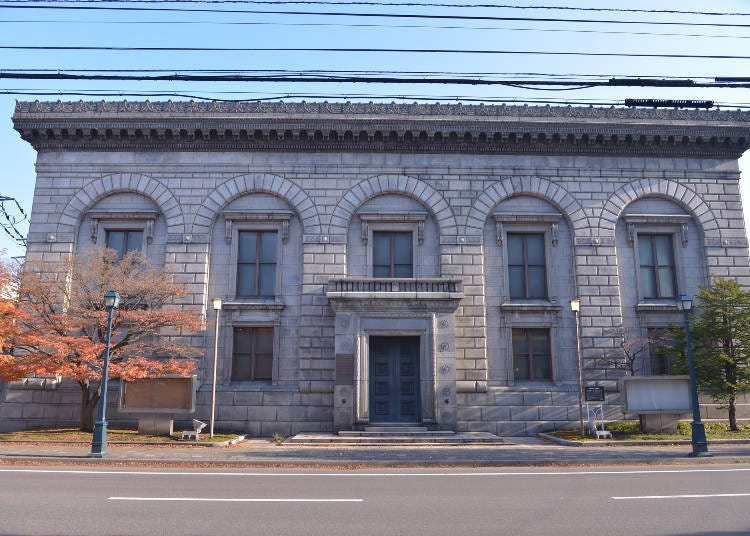
Otaru was once called “the best economic city north of Tokyo,” and was home to multiple financial institutions at its peak. Imposing former bank buildings still stand to this day, conveying Otaru’s former prosperity. One example is just a 10-minute walk from JR Otaru Station – the Former Mitsui Bank Otaru Branch, which opened in 1880 and remained in operation until 2002.
The Renaissance-style granite exterior and Greco-Roman design made it a luxurious main branch. While it has been renovated, the original atmosphere has been preserved in every detail from the vault and light fixtures to the atrium and hallways. In use as an “Otaru Art Base” since 2016, the history of the former Mitsui Banking Corporation Otaru Branch is presented in English, Russian, Chinese, and Korean on an informative sign for passersby to read.
-
Former Mitsui Bank Otaru Branch小樽芸術村 旧三井銀行小樽支店
- Address 1-3-1 Irouchi, Otaru City 047-0031
- Phone Number 0134-31-1033
・Hours: May – October 9:30 a.m. - 5:00 p.m., November - April 10:00 a.m. - 4:00 p.m.
・Admission: adults 500 yen, students 300 yen, high school students 200 yen
・Closures: May – October, open daily; November – April, every Wednesday (or the next day if it’s a national holiday), New Year holidays, and various temporary closures or holiday changes.
7. Former Takahashi Warehouse: The old soybean warehouse (Otaru)
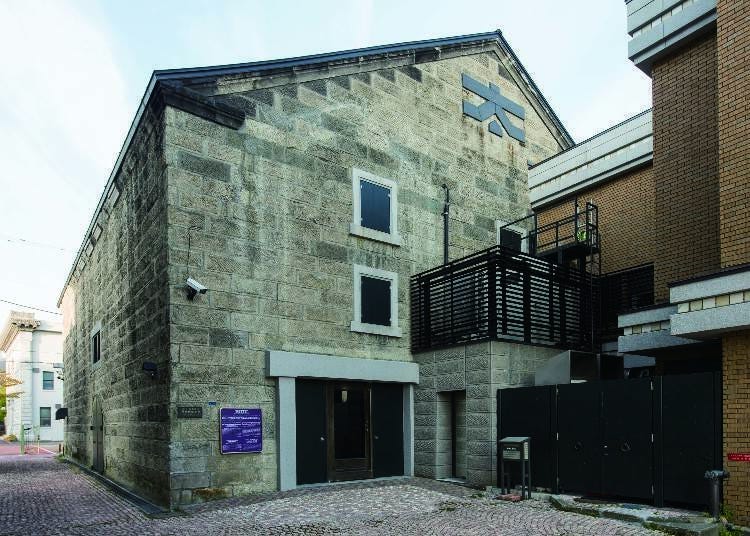
The Former Takahashi Warehouse, located about a 10-minute walk from JR Otaru Station, was built in 1923 for soybean storage. It features a Western-style structural element called a queen post truss. It has been reborn as an Otaru Art Base stained glass museum. The warehouse’s information plaque shares its history in English, Russian, Chinese, and Korean.
-
Stained Glass Museum, Otaru Art Village小樽芸術村 ステンドグラス美術館
- Address 1-2-17 Irouchi, Otaru City 047-0031
- Phone Number 0134-31-1033
・Hours: May - October 9:30 a.m. - 5:00 p.m., November - April 10:00 a.m. - 4:00 p.m. (*Last entry is 30 minutes before closing)
・Admission: Mitori Museum Stained Glass Museum (Former Takahashi Warehouse), adults 700 yen, students 500 yen, high school students 400 yen
・Closures: May – October, open daily; November – April, every Wednesday (or the next day if it’s a national holiday), year-end and New Year holidays
8. Hakodate Red Brick Warehouse: A symbol of the port’s prosperity (Hakodate)
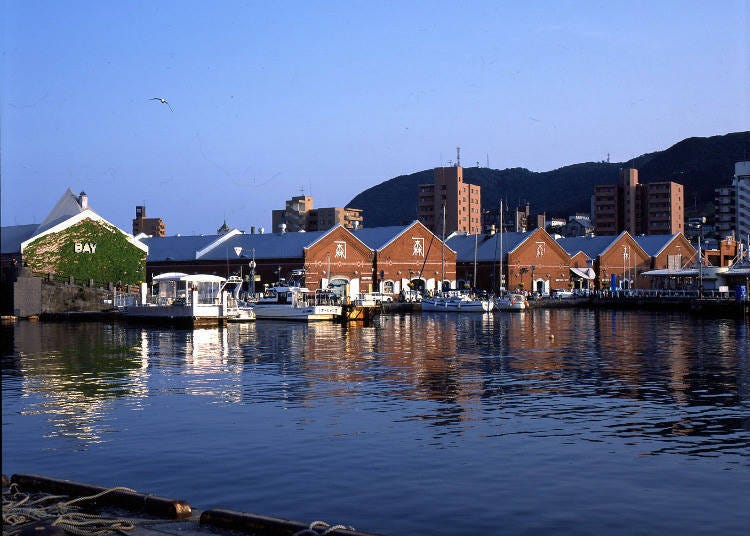
In southern Hokkaido’s Hakodate City, the Kanemori Red Brick Warehouse is about a 5-minute walk from the Hakodate Tram Jujigai tram stop.
In 1887, founder Kumashiro Watanabe bought up unused warehouses and land to start his warehousing business. Due to the era’s shipping boom and the need for more cargo storage, he could expand the scale of his operation further.
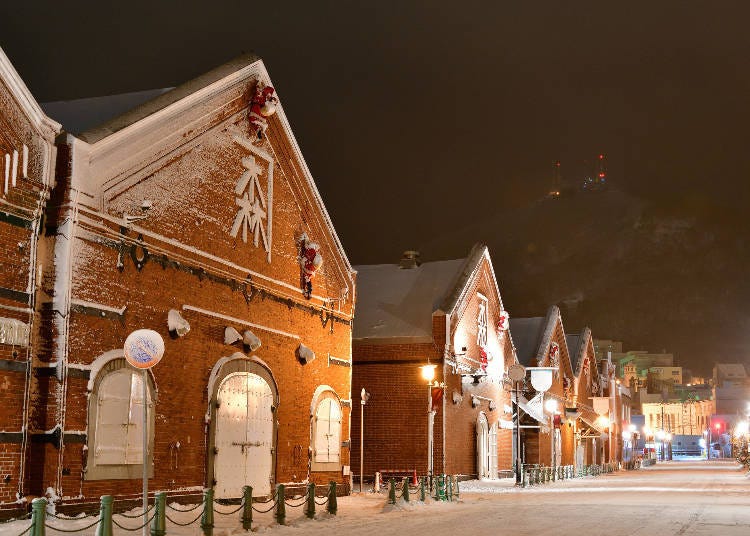
In the 1980s, the warehouse industry lost momentum because of changes in shipping routes and the fishing industry decline.
Still, the stately red-brick warehouses attracted attention as buildings that told the history of Hakodate, and in 1988, they were reimagined as the Kanemori Red Brick Warehouse shopping mall. Divided into three sections, “Bay Hakodate,” “Kanemori Yobutsukan,” and “Hakodate History Plaza,” it’s a treasure trove of restaurants and shops.
Hakodate City’s official tourist website provides more information and is available in English, traditional and simplified Chinese, Thai, and Indonesian.
9. Hakodate Orthodox Church: A distinct sight and sound (Hakodate)
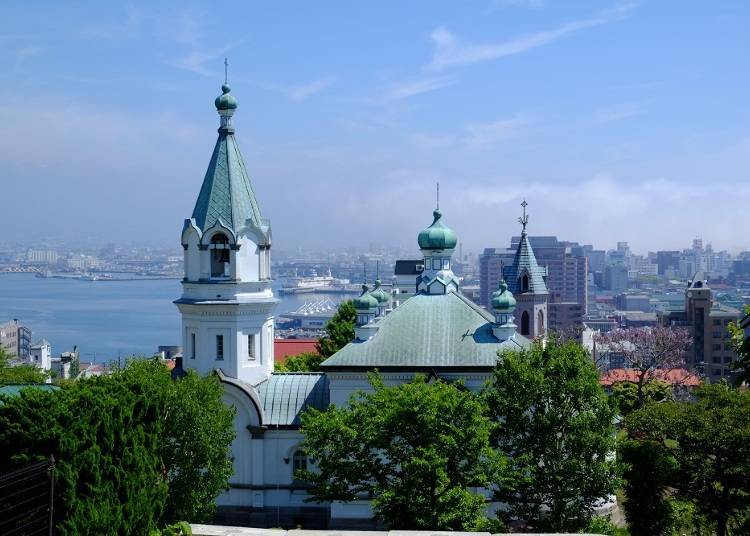
The Hakodate Orthodox Church, located about a 10-minute walk from the Jujigai tram stop, was built in 1860 as a consulate-affiliated cathedral. The first church was destroyed by the Great Fire of Hakodate in 1907, with the second, current building being constructed in 1916.
The walls of the brick building are finished with white plaster, and the roof is made of green copper plate. There are six crown-shaped cupolas topped with crosses. Because the church bell rings at the beginning and end of prayer times, the church is fondly called “Ganganji” by local citizens, and the bell’s tone has been certified as one of the “100 Soundscapes of Japan.” (“Gan-gan” is Japanese onomatopoeia for the sound of a large bell and “ji” means “temple.”)
Hakodate City’s official tourist website provides more information in English, traditional and simplified Chinese, Thai, and Indonesian.
(*Due to restoration and repair work, the church is closed to visitors until mid-December 2022.)
-
Hakodate Orthodox Church函館ハリストス正教会
- Address 3-13 Motomachi, Hakodate, Hokkaido 040-0054
10. Hakodate Museum and Municipal Archives (former Kanamori Western Goods Store): A heavy brick structure that escaped the great fire (Hakodate)
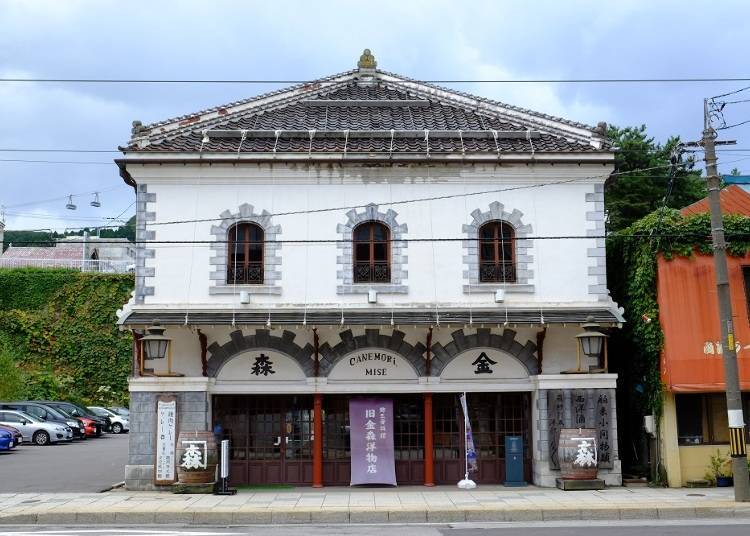
The former Kanamori Western Goods Store, located about a 1-minute walk from the Hakodate Tram’s Suehirocho tram stop, opened in 1880 and sold foreign-made products.
While surrounding stores burned down in the Great Fire of Hakodate in 1907, the Kanamori store remained standing as it is constructed of heavy bricks. After ceasing retail operations, it became the Hakodate Museum and Municipal Archives. Due to deterioration, it was closed for restoration in 1998 and reopened in October 2000.
The first floor is a partial reproduction of the store and bookstore with historical artifacts exhibited under the theme of “Hakodate’s high collar culture in the Meiji era.”
A Swiss-made Karakuri music box the store’s founder purchased during a trip to Europe and the United States in 1892 is also on display, and a recording of its music played in the museum. On the 2nd floor, a diorama depicting the history of the Kanamori Western Goods Store, photographs from that period, a wax cylinder gramophone, and more are on display.
Although the exhibits don’t have many non-Japanese explanations, Hakodate’s tourist attractions are presented in English, traditional and simplified Chinese, Thai, and Indonesian on the official Hakodate tourist information website “Hakorabu” so you can easily learn more via smartphone or tablet.
-
Hakodate Museum Folk Museum (former Kanamori Western shop)市立函館博物館 郷土資料館(旧金森洋物店)
- Address 19-15 Suehirocho, Hakodate City 040-0053
- Phone Number 0138-23-3095
・Hours: April - October 9:00 a.m. - 4:30 p.m., November - March 9:00 a.m. - 4:00 p.m.
・Admission: Adults 100 yen, students and children 50 yen
・Closures: Mondays, the last Friday of every month, public holidays (excluding November 3 and during Golden Week), year-end and New Year holidays (December 29 - January 3)
11. Old Public Hall of Hakodate Ward: An Important Cultural Property of Hakodate City (Hakodate)
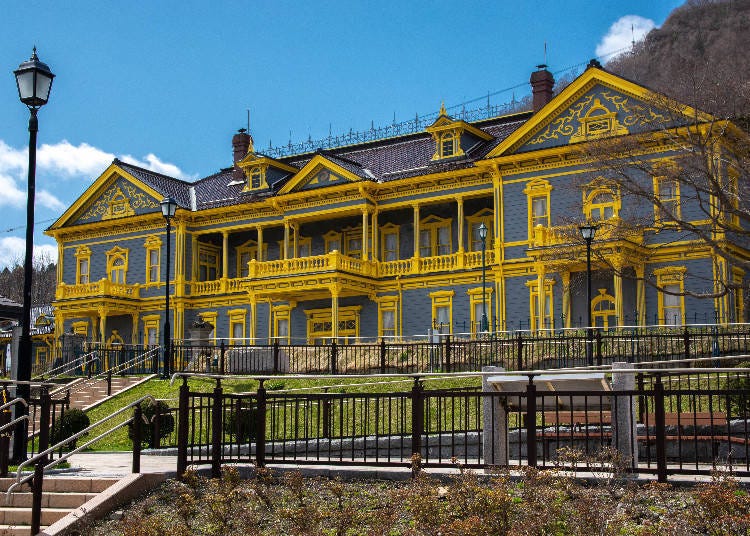
The Old Public Hall of Hakodate Ward is about a 7-minute walk from the Suehirocho tram stop or a 3-minute walk from the Hakodate bus’s Kokaido-mae bus stop.
The Great Fire of Hakodate in August 1907 destroyed the town hall and chamber of commerce, so volunteers started the “Public Hall Construction Council” and solicited donations for reconstruction.
However, due to the impact of the fire, collections failed to meet expectations. Hence, council members approached Soma Teppei, a wealthy merchant who funded the construction of the Hakodate Ward Public Hall, which was completed in September 1910. It’s still widely used for concerts and exhibitions, and the emperor’s family has even visited.
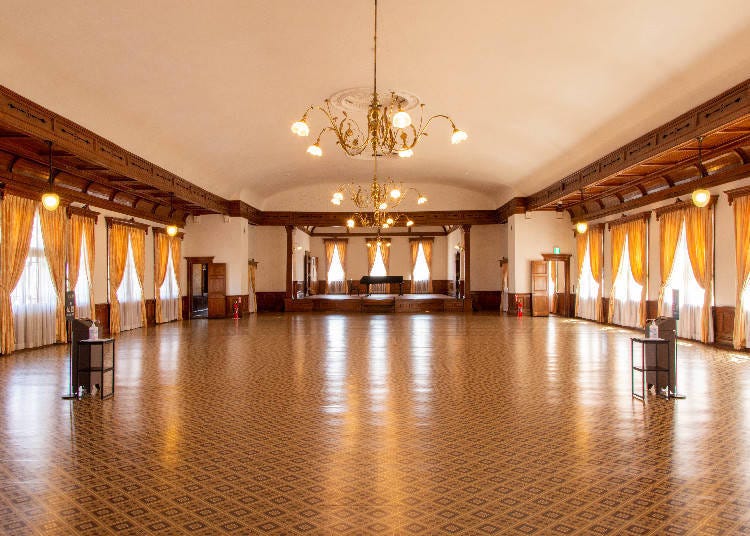
In addition to furniture and other furnishings that create a gorgeous atmosphere, the building also houses the “Hakodate Haikara Costume Museum,” where you can try on period costumes and stroll through the hall and take pictures.
In addition to a description in Russian at the main gate, the Hakorabu tourist website has info in English, traditional and simplified Chinese, Thai, and Indonesian.
-

-
Address
11-13, Motomachi, Hakodate-shi, Hokkaido, 040-0054
View Map -
Nearest Station
Hakodate Station (Hakodate Main Line)
- Phone Number 0138-22-1001
-
Address
11-13, Motomachi, Hakodate-shi, Hokkaido, 040-0054
12. Abashiri Prison: A frigid prison that struck fear in the hearts of criminals (Abashiri)

Abashiri Prison, located in eastern Hokkaido’s Abashiri City, is the northernmost prison in Japan, established in 1890. It’s about a 5-minute walk from the Abashiri Prison bus stop.
When opened, it was called “the most modern prison in Japan” and was built in a Western architectural style. The Kushiro Shuji Superintendent incarcerated 1,392 prisoners in Abashiri and set them to work constructing the main road to Sapporo.
More than 30% of the prisoners were sentenced to life imprisonment, while the other felons served at least 12 years.
In just one year, a 160km stretch from Abashiri to Kitami Pass was completed, but injuries and malnutrition from harsh working conditions resulted in more than 200 deaths.
Renovation on the prison began in 1983, and gradually much of the facility’s history disappeared, with only the red brick walls remaining. It’s still under the jurisdiction of the Ministry of Justice, so tourists can’t enter, and there are no information signs. Still, there are details on the Abashiri City Tourism Association website in English and traditional and simplified Chinese.
-

-
Address
1-1, Yobito, Abashiri-shi, Hokkaido, 099-2421
View Map -
Nearest Station
Abashiri Station (Sekihoku Main Line / Senmo Main Line)
7 minutes by bus
- Phone Number 0152-45-2411
-
Address
1-1, Yobito, Abashiri-shi, Hokkaido, 099-2421
Find “Exotic Japan” in Hokkaido
The Western buildings scattered throughout Hokkaido also incorporate Japanese design elements and can be found not only in tourist area, but also in the form of local station buildings, private homes, and warehouses. Visit Hokkaido and make your own architectural discoveries of “Exotic Japan”!
Text by: Masakazu
*Information in this article is accurate as of December 2021. Please check official websites for latest information.
English translation by Gabriel Wilkinson
Related articles
- Area
- Category
*Prices and options mentioned are subject to change.
*Unless stated otherwise, all prices include tax.
Popular Tours & Activitiess
Recommended places for you
-
Appealing

Shirogane Blue Pond (Aoiike)
Rivers, Lakes & Canyons
Furano / Biei / Sounkyo
-
Appealing

Rukku and Uohei
Izakaya
Sapporo / Chitose
-
Appealing

Odori Park
Parks
Sapporo / Chitose
-
Appealing

Shiroi Koibito Park
Theme Parks
Sapporo / Chitose
-
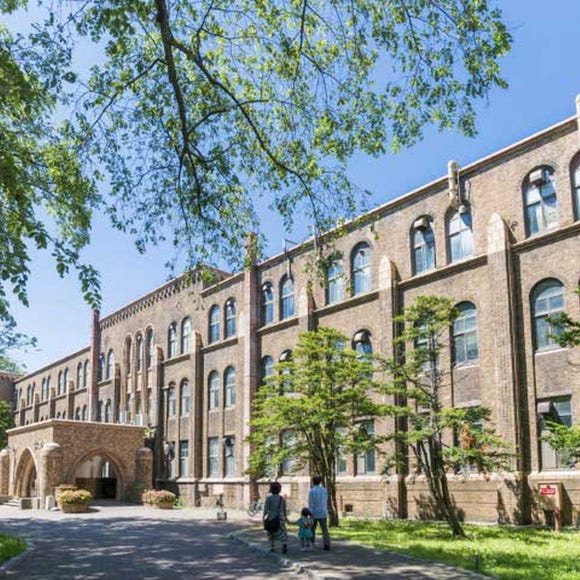
Hokkaido University
Other Architecture
Sapporo / Chitose
-
Appealing

Sapporo Ramen Yokocho
Ramen
Sapporo / Chitose
-

Great Local Eats: 5 Expert-Recommended Local Chain Restaurants in Hakodate
by: Nobuka Kawashima
-

7 Iconic Hokkaido locations that will make your Instagram shine
by: Himanshi Shah
-
Ad

Cycling Through Hokkaido: Discover the Beauty of Memuro and the Tokachi Plains
-

Beyond Hakodate and Matsumae: Enjoy the Hidden Gems of Hokkaido’s Donan Area
-
Ad

Smart Ways to Avoid Crowds and Enjoy a Safe, Comfortable Trip to Otaru.
-

BIGGEST SALE ALERT! SATUDORA Tax-Free Winter Sale: Stack Coupons for Massive Savings!
by: Guest Contributor
-

Why Hokkaido University Campus is a Must on a Trip to Northern Japan
-

What to Pack for Japan: 8 Essential Things for a Hassle-Free Trip
-

Where to Stay in Noboribetsu Onen: 6 Ryokan Hotels in Hokkaido's Spa Wonderland
by: Masakazu Yoshida
-

Sapporo Snapshots: Pro Tips on Taking Best Photos of the Iconic Sapporo Clock Tower!
-

Hokkaido Lavender Fields: 6 Best Places in Furano to See Japan's Dreamiest Purple Meadows
by: Nobuka Kawashima
-

These 18 Things to Do in Hakodate Will Make You Fall in Love With the Northern Wonderland
by: Guest Contributor
- #best sushi hokkaido
- #things to do hokkaido
- #best ramen sapporo
- #what to bring to japan
- #new years in tokyo
- #what to buy in ameyoko
- #japanese nail trends
- #what to do in odaiba
- #onsen tattoo friendly tokyo
- #daiso
- #best sweets otaru
- #japanese fashion culture
- #best nature furano
- #japanese convenience store snacks
- #best japanese soft drinks



















